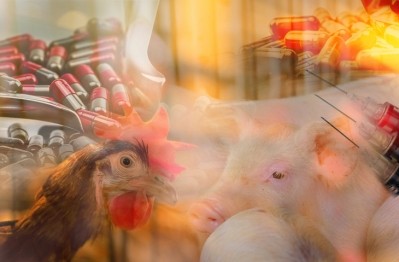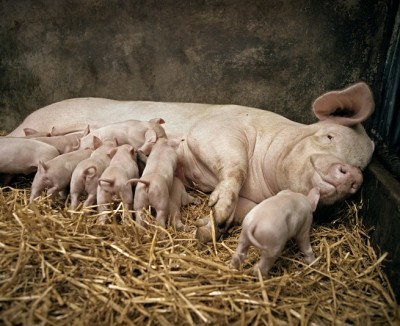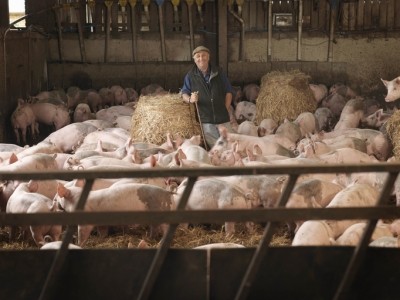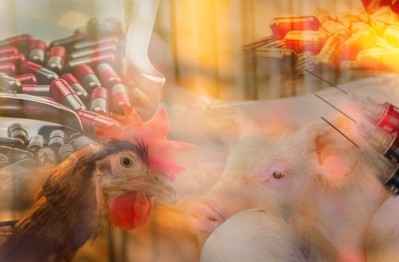Chinese team identifies in-feed antibiotic alternative for swine production
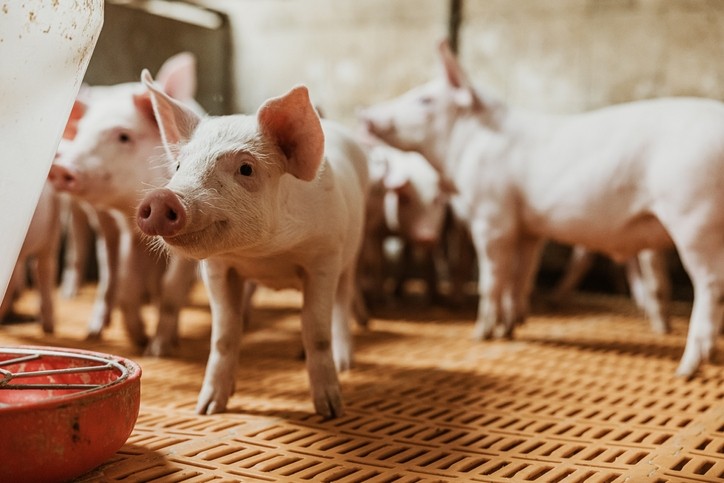
China eliminated growth-promoting antibiotics from pig feed in 2020, reported the China-based researchers writing in Animal Nutrition.
However, the banning of AGPs has resulted in outbreaks of diseases and a reduction in growth performance, they said. “Therefore, safe, and effective alternatives for in-feed antibiotics are needed urgently.”
Many raw materials have been investigated as potential substitutes for antibiotics, such as essential oils and enzymes, but with limited success, remarked the team.
“Antimicrobial peptides (AMPs), also termed host defense peptides, are indispensable components in immune regulation that are naturally abundant in all live beings from microorganisms to animals.
“AMPs exert a broad spectrum of biological activities against bacteria, yeast, fungi, and viruses. Furthermore, some AMPs even play a therapeutic role in wound healing, endotoxin-neutralizing, and biofilm disruption. Unlike conventional antibiotics, AMPs exert antimicrobial activities primarily through membrane disruption or by attacking intracellular targets; thus, they reduce the likelihood of inducing antibiotic resistance. Therefore, AMP represent potential alternatives to in-feed antibiotics,” commented the Chinese research team.
Different AMPs have been reported to relieve diarrhea and intestinal inflammation, while promoting growth, nutrient digestibility, and microbiota composition of weaned pigs, they wrote.
Previous studies have indicated that porcine intestinal antimicrobial peptides (PIAPs), which were initially found in the intestine of welfare-friendly (free-range and minimum requirements for antibiotic use) pigs, displayed in vitro antibacterial activity and intestinal antioxidant capacity, noted the scientists.
However, few studies have been conducted to evaluate the efficiency of PIAPs as alternatives to in-feed antibiotics in swine nutrition, said the research team.
The study
Their study aimed to investigate the efficiency of PIAP as an alternative to in-feed antibiotics in terms of growth performance, intestinal morphology, digestive enzymes and immunity, and microbiota community of the post-weaning piglets.
A total of 204 piglets with a similar body weight were randomly allocated to four groups (51 piglets per group):
- Control group: basal diet
- AB group: antibiotic, basal diet + chlortetracycline
- P1 group: basal diet + a low dose of PIAP (400 mg/kg from d 1 to 24; 300 mg/kg from d 25 to 37)
- P2 group, basal diet + a high dose of PIAP (600 mg/kg from d 1 to 24; 500 mg/kg from d 25 to 37)
The PIAP used was purchased from Guangzhou Bestide Bioscience and Technology Co, Ltd. The peptides were initially isolated from the intestine of free-range pigs in the countryside in Hainan Province, China, reads the paper.
The PIAP contained 1.5% peptides, around 50% feed grade maifan stone, 25% feed grade silicon dioxide, 15% medium and bacterial cells, less than 7% moisture and vitamins.
At day 37 of the trial, blood and tissue samples were taken from nine pigs per group. Each piglet was weighed on the first day of the study and then on day 24, and day 37. Daily feed intake was recorded, and the values for average daily feed intake (ADFI), average daily gain (ADG), and the ratio of feed intake to body weight gain (F:G) were calculated as well, while the diarrhea rate was also observed.
Findings
The results, according to the authors, showed that serum indicators of hepatocyte damage and relative organ weight were not affected by these treatments.
Compared with the AB treatment, the P1 treatment remarkably decreased jejunal crypt depth and increased jejunal and ileal villus height:crypt depth ratio, they said.
The values of jejunal maltase, lactase, sucrase, intestinal alkaline phosphatase, and secretory immunoglobulin A (SIgA) in the P1 group were sharply increased compared with those in the control and P2 group.
Compared with the control group, the P1 group decreased serum concentrations of D-lactate, diamine oxidase, and endotoxin, and increased the abundance of Lactobacillus reuteri in the colonic feces. Furthermore, there was a positive correlation between the abundance of L. reuteri and the concentrations of maltase, lactase, sucrase, and SIgA.
The authors concluded that dietary supplementation with a low dose of a porcine intestinal antimicrobial peptide has beneficial effects on intestinal morphology, digestive enzymes, immunity, and permeability by shaping the gut microbiota composition in weaned piglets.
“This study will provide a valuable reference for using a PIAP as an in-feed antibiotic alternative in swine production.”
Source: Animal Nutrition
Title: Porcine intestinal antimicrobial peptide as an in-feed antibiotic alternative improves intestinal digestion and immunity by shaping the gut microbiota in weaned piglets
Authors: F Ji, H Yang, Q Wang, J Li, H Zhou, S Liu
